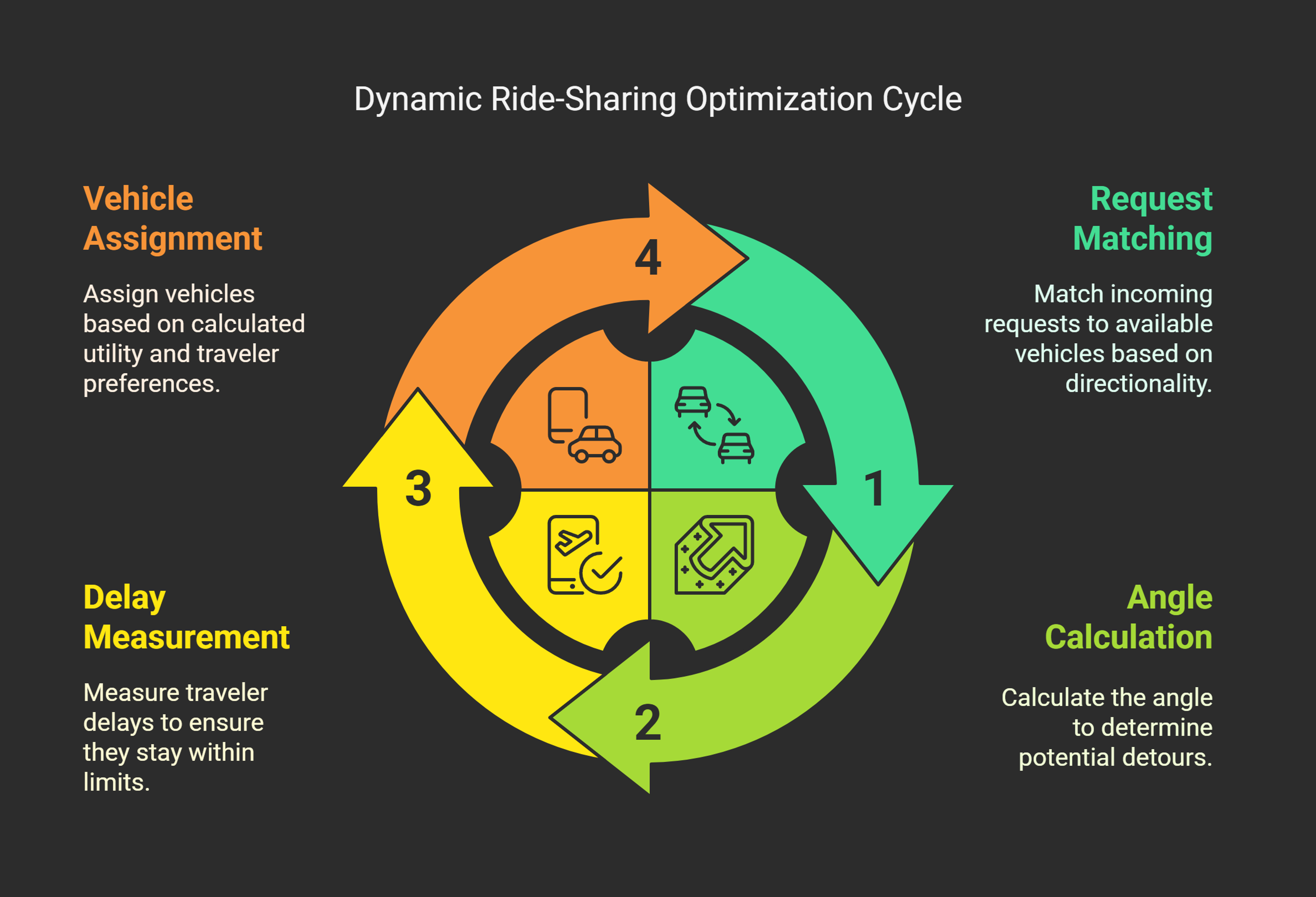Pooling (or Dynamic Ride-Sharing) Choice#
Pooling decisions in POLARIS are currently conditional on travelers choosing to use a shared mobility mode (particular modes like a Taxi or TNC-based service). For synthetically generated demand, trip requests being processed by the shared mobility module are evaluated against one of the available pooling models that has been implemented. The choice to pool for fixed demand, however, is currently set based on the operator availability to pool.
Once a model is evaluated, a trip request’s preference to pool or not is stored at the trip request level and is passed on to the operator during the matching process. Based on inclination to pool, and time and cost sensitivity can be derived from the traveler’s socio-demographics in relation to the evaluated model from the cost and time parameters and can be incorporated into the matching strategy.

Pooling Models#
The baseline assumption when setting the fleet model parameter DRS_FLAG = true is that 100% of travelers are willing to share a ride with another stranger (subject to max detour constraints that are advertised in advance). The use of pooling models modify this assumption. Variables to use a pooling model can be set in the scenario file (use_TNC_pooling_model and pooling_model_file). The json that holds parameter values (specified by pooling_model_file) can be used to set which one of the following available pooling models is used during simulation:
- zonebased: developed based on spatial factors aggregated from the zone level
- WTP: developed from survey data that uses a hurdle model to identify willingness to pay to pool based on stated preferences
- CU: developed from survey data that establishes pooling choice using a survey design that posed a variety of travel time and cost options and is based on stated preferences
- UW: developed from survey data that integrates vehicle type (driver-based or autonomous) into pooling decisions based on stated preferences
Important
Please refer to the following paper for more details on the WTP strategy:
Gurumurthy, K.M. and Kockelman, K.M. (2018). Modeling Americans' Autonomous Vehicle Preferences: A Focus on Dynamic Ride-sharing,
Privacy, and Long-Distance Mode Choices. Technological Forecasting & Social Change 150. https://doi.org/10.1016/j.techfore.2019.119792
Important
Please refer to the following paper for more details on the zonebased strategy:
Dean, M.D., Gurumurthy, K.M., de Souza, F., Auld, J., Kockelman, K.M. (2022). Spatial Variation in Shared Ride-Hail Trips &
Factors Contributing To Sharing. Journal of Transport Geography 91, 102944. https://doi.org/10.1016/j.jtrangeo.2020.102944
Important
Please refer to the following papers for more details on the CU strategy (with the actual model-related paper forthcoming):
Su, Haotian, Rakesh Gangadharaiah, Elenah B. Rosopa, Johnell O. Brooks, Lisa Boor, Kristin Kolodge, Patrick J. Rosopa, and Yunyi Jia. "Exploration of factors that influence willingness to consider pooled rideshare." Transportation Research Record 2678, no. 8 (2024): 57-73. https://journals.sagepub.com/doi/full/10.1177/03611981231213650
Su, H., Khan, N.A., Gurumurthy, K.M., Paul, J., Gangadharaiah, R., Boor, L., Kolodge, K., Auld, J., Brooks, J.O. and Jia, Y., 2025. Analyzing Users' Preferences between Personal and Pooled Rideshare Services Using a Mixed Logit Modeling Approach.